With more people exploring the world digitally before they travel, mobile apps have become the new-age travel agents.
But beyond helping users book flights or uncover hidden gems, travel apps are also powerful business tools. The big question many founders ask is—how travel apps make money?
In this blog, we’ll break down the complete travel apps monetization strategy—from proven business models to real-world app examples already turning downloads into dollars.
Whether you're building a booking platform or a destination discovery app, you’ll find monetization strategies tailored to your vision and growth goals through this blog.
Key Takeaways:
Travel apps use models like commissions, ads, and subscriptions, each showing how travel apps make money effectively.
Offering AI tools like fare prediction or itinerary planning increases user value and boosts monetization.
Leading apps like Hopper and Airbnb combine revenue streams for maximum ROI and flexibility.
Early monetization planning helps you scale faster and improve user engagement from the start.
There's no one-size-fits-all—your revenue model depends on your audience, purpose, and app flow.
Partnering with a trusted travel app development company like JPLoft ensures your monetization is scalable and future-proof.
Why the Travel App Market Is Ripe for Monetization? [2024–2025 Stats]
The mobile travel industry isn’t just growing—it’s exploding with potential. As more travelers rely on smartphones for planning, booking, and navigating their journeys, travel apps have become essential tools. These updated stats reveal why now is the perfect time to build—and monetize—a travel app.
A] Global Travel & Tourism App Market Booms
The travel and tourism apps market reached USD 650.7 billion in 2024 and is projected to hit USD 3.55 trillion by 2034, growing at a strong 18.5% CAGR from 2025 to 2034.
B] Record App Downloads & Engagement
In 2024, travelers downloaded travel apps 4.2 billion times globally, with total usage time exceeding 20 billion hours, up 7.3% year-over-year. This signals strong growth momentum despite increased competition.
C] In-App Spending Skyrockets
The industry generated an estimated $629 billion in travel app revenue in 2023, and spending continued into 2024. This showcases rising revenue generation in travel mobile apps, driven by more in-app purchases and microtransactions.
If you're planning to enter the space, it’s essential to calculate the cost to develop a travel app based on your business model and core features.
D] AI & eSIMs Are Unlocking New Revenue Streams
The AI in Tourism market is forecasted to reach USD 2.95 billion in 2024, growing to $13.38 billion by 2030 (~29% CAGR). Meanwhile, eSIMs adoption is rising fast, growing from $2.03 billion in 2024 to $3.3 billion in 2025.
Emerging technologies like AR in travel apps and personalized AI experiences are creating richers, more immersive travel journeys for users—and new monetization opportunities for developers.
As user expectations grow, so do product complexities. Be aware of common travel app development challenges such as multilingual support, real-time booking sync, and offline functionality—especially when targeting global audiences.
The shift to mobile-first travel is no longer optional—it's inevitable. That’s why aligning your platform with scalable monetization and future-ready features is key to success.
Why Travel App Monetization Is a Must in Today’s Market?
Building a travel app is only half the journey—making it profitable is where real success begins. With user behavior, tech evolution, and market demand aligned in 2025, now is the time to integrate monetization into your app strategy.
Keeping up with travel app development trends—from personalization to embedded AI—gives you a strong head start on revenue planning.
Here’s why founders can’t afford to ignore monetization:
► Users Are Willing to Pay for Personalization
Today’s travelers value convenience, real-time updates, and curated experiences.
That’s why they’re happy to pay for upgrades, itinerary planning, or even premium access.
If you’re wondering how can a travel app generate revenue, personalization is one of the most reliable starting points.
► Monetization Makes Apps Sustainable
Relying only on downloads won’t keep your business afloat.
A solid travel apps monetization strategy ensures long-term viability, fuels innovation, and helps improve user retention by funding better features and ongoing support.
► Multiple Revenue Streams Mean Greater Profits
From booking commissions to in-app ads and subscriptions, there are endless answers to how travel apps make money. Smart founders leverage multiple income streams to reduce risk and grow faster.
► Investors and Users Expect It
Startups that skip monetization planning often struggle to scale. If you want to raise capital or grow sustainably, showing how travel apps make money builds investor confidence and justifies your user acquisition budget.
Before we dive into popular business models, make sure you understand how to create a travel app that’s ready for monetization from day one. The right foundation leads to long-term profitability.
Top Monetization Models for Travel Apps in 2025
Your travel app isn’t just a product—it’s a business. And the sooner you define how travel apps make money, the better your chances of building a sustainable, scalable platform.
Let’s explore the most powerful and practical monetization strategies for travel applications in 2025.
1. Commission-Based Bookings
Apps earn a percentage every time a user books through their platform—flights, hotels, car rentals, or activities.
-
Best for: Online Travel Agencies (OTAs)
-
Benefits: Simple integration with service providers
-
Challenges: Requires consistent volume and vendor partnerships
-
Examples: Booking.com, Agoda
This remains one of the best travel app revenue models for high-traffic applications that process frequent bookings.
With a reliable stream of users, even small commissions can accumulate into substantial revenue.
2. Freemium + Premium Features
Offer basic tools (like trip planners or checklists) for free, while locking advanced features—offline access, AI-generated itineraries, or real-time alerts—behind a paywall.
-
Best for: Travel planning tools
-
Benefits: High reach, strong LTV for paying users
-
Challenges: Conversion depends on perceived value
-
Example: TripIt
How do free travel apps make money? This is one of the most commonly used models. A well-designed freemium experience builds trust and upsells naturally.
3. In-App Advertising
Use banners, video ads, interstitials, or location-based promotions to earn ad revenue.
-
Best for: Free, content-heavy apps
-
Benefits: Easy to implement
-
Challenges: Can disrupt user experience
-
Example: Skyscanner
One of the simplest entry-level ways to monetize travel applications with minimal development cost. Careful ad placement can generate revenue without overwhelming users.
4. Subscription-Based Services
Charge a recurring fee for access to VIP content, AI alerts, or exclusive deals.
-
Best for: Premium travel tools or concierge services
-
Benefits: Predictable revenue
-
Challenges: Requires continuous feature updates
-
Examples: Roadtrippers Plus, LoungeBuddy
This is a key pillar in modern travel apps' monetization strategy. If you're exploring pricing options, you might want to explore this mobile app monetization guide for an in-depth comparison of freemium, subscription, and hybrid models.
It’s ideal for apps offering high-value features that users want on an ongoing basis.
5. Affiliate & Referral Programs
Refer users to partner sites like Booking.com, WorldNomads, or Amazon (for travel gear) and earn on conversions.
-
Best for: Review-based and niche travel apps
-
Benefits: No infrastructure needed
-
Challenges: Dependent on third-party performance
-
Example: TripAdvisor, Rome2Rio
A great option for startups looking to earn money with travel mobile apps passively through referral links. It’s scalable, lean, and often low-cost to integrate.
6. Lead Generation for Local Partners
Collect user interest in destinations, activities, or accommodations—and sell those leads to vendors.
-
Best for: Experience-driven or hyperlocal travel apps
-
Benefits: High-margin B2B income
-
Challenges: Requires local partnerships
-
Example: GetYourGuide
Among the fastest-growing monetization techniques for travel startups. To ensure consistency post-launch, don't forget to factor in mobile app maintenance services — especially when scaling across regions.
A reliable backend ensures that vendor partnerships and user data flows remain uninterrupted.
7. AI-Based Dynamic Pricing & Fare Freezing
Use AI/ML to predict pricing trends. Let users lock in deals or receive tailored recommendations based on historical patterns.
-
Best for: Flight or hotel tracking apps
-
Benefits: Personalized, premium-value features
-
Challenges: Needs clean data & strong algorithms
-
Example: Hopper
Curious how this works? Check out the cost to develop a travel app like Visit Dubai. AI not only improves monetization—it boosts user satisfaction and loyalty.
8. Sponsored Listings & Vendor Promotions
Charge businesses for premium exposure within your app’s search results or featured placements.
-
Best for: Marketplaces or aggregator platforms
-
Benefits: Vendor-paid model avoids user friction
-
Challenges: Balance paid vs. organic content
-
Example: Booking.com, Agoda PPC model
Often paired with affiliate or commission models, this creates a hybrid income stream that scales with volume. A strong vendor ecosystem is essential for consistent results.
9. Custom Travel Bundles (Dynamic Packaging)
Allow users to mix hotels, flights, guides, and local services into one personalized package.
-
Best for: Full-service booking apps
-
Benefits: Higher transaction value
-
Challenges: Requires advanced tech stack
This model can power your travel booking app monetization strategy with flexibility and higher margins. Bundling encourages users to spend more while enhancing convenience.
10. White-Label or SaaS Licensing
If your app infrastructure is solid, you can license it to smaller agencies or global travel startups.
-
Best for: Mature platforms
-
Benefits: Recurring B2B income
-
Challenges: Customization demands
-
Example: Travelopro, Amadeus
A strategic option in B2B-focused travel app income models. If you're targeting local businesses or niche clients, partnering with a mobile app development company in Denver can help tailor white-label travel solutions with region-specific scalability and support.
Don’t just ask how travel apps make money? Ask what value your users are willing to pay for, then build your monetization model around it—or combine two to three for a stronger play.
Monetization Models Used by Successful Travel Apps
Knowing the models is one thing—but seeing them successfully applied by top travel brands makes all the difference. Below are 10 global travel apps and how they’ve cracked their monetization puzzle.
► Hopper
Hopper is one of the most innovative travel apps using AI to predict flight and hotel prices. It allows users to “freeze” prices or get alerts for the best time to book.
-
Model: AI-based fare prediction + booking
-
Revenue: Commissions, service fees, fare lock payments
-
Strength: Tech-led personalized pricing
Hopper proves that blending predictive technology with smart monetization not only enhances user experience but drives serious revenue. Curious how to create an app like Hopper? This model is a perfect example of AI in hospitality, transforming decision-making and boosting profit potential.
► Booking.com
Booking.com dominates the OTA space by offering users access to millions of listings—hotels, homes, flights, and car rentals—all in one seamless platform. Its user-first design and localized content fuel high engagement worldwide.
-
Model: Commission-based OTA + premium listings
-
Revenue: Hotel, flight, and experience booking commissions; paid placements
-
Strength: Global partner network and unmatched inventory scale
This is one of the most profitable business models of travel apps, trusted by both vendors and travelers. Its success lies in combining discoverability, personalization, and vendor-focused monetization.
► Skyscanner
Skyscanner simplifies the travel search experience by aggregating flight, hotel, and car rental options from multiple providers into one platform. Its lightweight structure and fast UI attract millions of users daily.
-
Model: Referral + advertising
-
Revenue: Redirect commissions, sponsored placements, display ads
-
Strength: Scalable model with minimal booking infrastructure
Skyscanner is a perfect case study if you're exploring ways to monetize travel applications without managing bookings directly. It earns by driving value through discovery, not transactions. It’s an ideal option for early-stage founders looking to create an app that earns through high-volume redirections.
► Rome2Rio
Rome2Rio helps travelers discover multi-modal transport routes—flights, buses, trains, ferries—between any two points globally. Its value lies in simplifying complex itineraries with just a few taps.
-
Model: Affiliate + redirection
-
Revenue: Partner referrals, affiliate link commissions
-
Strength: Simple UX, low infrastructure, global routing data
Rome2Rio is proof that even discovery-based apps can earn money with travel mobile apps through smart affiliate monetization. It’s lean, efficient, and built for volume. Need to scale faster? You can hire dedicated developers to optimize routing APIs and partner integrations.
► Airbnb
Airbnb revolutionized travel stays by enabling peer-to-peer rentals—from urban apartments to countryside cabins—while also expanding into unique local experiences. Its community-based approach disrupted the traditional hospitality model.
-
Model: Dual-sided marketplace (guests + hosts)
-
Revenue: Commission from bookings, service fees from hosts and guests
-
Strength: Global trust, scalable infrastructure, user-driven supply
If you're wondering how can a travel app generate revenue, Airbnb is a masterclass in combining marketplace efficiency with user loyalty. It’s a high-trust model that delivers at scale.
Interested in launching a predictive travel platform? You can now create an AI app that offers smart recommendations, trust-building features, and real-time alerts.
► BlaBlaCar
BlaBlaCar connects drivers with empty seats to passengers traveling the same route, enabling affordable long-distance carpooling. The platform fosters a strong community built on trust and transparency.
-
Model: Ride-sharing + premium listing boosts
-
Revenue: Trip-based service fees, paid visibility upgrades for drivers
-
Strength: Community-driven growth and asset-light scaling
BlaBlaCar is a brilliant example of different revenue models for travel apps that don’t rely on traditional bookings. It monetizes convenience, trust, and peer-to-peer collaboration.
Summary Table: Monetization Models of Top Travel Apps
|
Travel App |
Monetization Model |
Primary Revenue Streams |
Key Strengths |
|
Hopper |
AI-based fare prediction + booking |
Commissions, service fees, fare lock payments |
Predictive pricing with personalized AI features |
|
Booking.com |
Commission-based OTA + premium listings |
Hotel & flight commissions, sponsored placements |
Massive partner network and global inventory |
|
Skyscanner |
Referral + display advertising |
Redirect clicks, airline ads, sponsored placement |
Lean model with global data aggregation |
|
Rome2Rio |
Affiliate redirection |
Partner click-through commissions |
Lightweight routing engine with global reach |
|
Airbnb |
Dual-sided marketplace |
Guest & host service fees, experience bookings |
Trusted community, scalable P2P model |
|
BlaBlaCar |
Ride-sharing + premium boosts |
Trip fees, visibility upgrades |
Peer-to-peer trust and asset-light scaling |
If you're wondering how to make money with travel apps, just look at the variety here. Whether you’re building a high-tech predictive tool like Hopper or a lightweight affiliate engine like Skyscanner, there are countless travel apps monetization strategies that work. Make sure you select the right mobile app tech stack to support your app's chosen monetization model, performance, and scalability.
Monetize Your Travel App the Smart Way—Partner with JPLoft
A great app idea isn’t enough—smart monetization is what turns your vision into a thriving travel tech business.
At JPLoft, we go beyond just code. We help you validate the right travel apps monetization strategy, design future-ready features, and build scalable platforms that perform. From AI-based itinerary planners to experience-driven OTAs, our experts know exactly how travel apps make money—and how yours can too.
Ready to partner with a travel app development company that builds with monetization in mind? Let’s bring your travel app to life—and make it profitable.
Final Thoughts
The travel app market is evolving fast—and monetization is no longer optional. Whether it’s through commissions, subscriptions, referrals, or predictive AI, knowing how travel apps make money helps you shape smarter products and better user journeys. The most successful startups don’t wait to monetize—they build with it in mind from day one.
Choose a travel apps monetization strategy that fits your audience, test early, and stay adaptable. With the right approach, your travel app can do more than guide journeys—it can fund your next one too.
FAQs
Some of the best monetization strategies in 2025 include AI-powered dynamic pricing, vendor-sponsored listings, lead generation for local partners, and in-app purchases.
Yes, niche travel apps—like those focused on solo travel, backpacking, or eco-tourism—can generate revenue through curated partnerships, paid memberships, and experience-based bookings.
For B2B, SaaS licensing and white-label app solutions are popular. These allow travel agencies or businesses to use your app under their branding for a recurring fee.
A travel booking app typically earns profit through commission on transactions, vendor partnerships, and upselling services like insurance or premium customer support.
Yes. A business model defines how your app operates (e.g., marketplace, SaaS), while a revenue model focuses on how it makes money (e.g., ads, commissions, subscriptions).





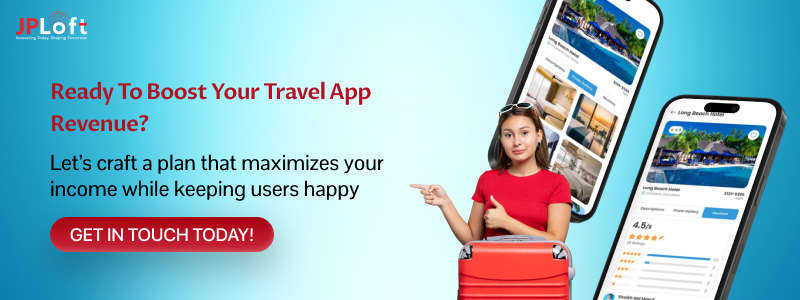
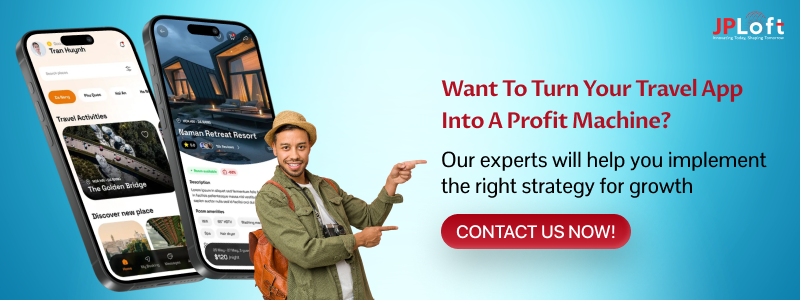

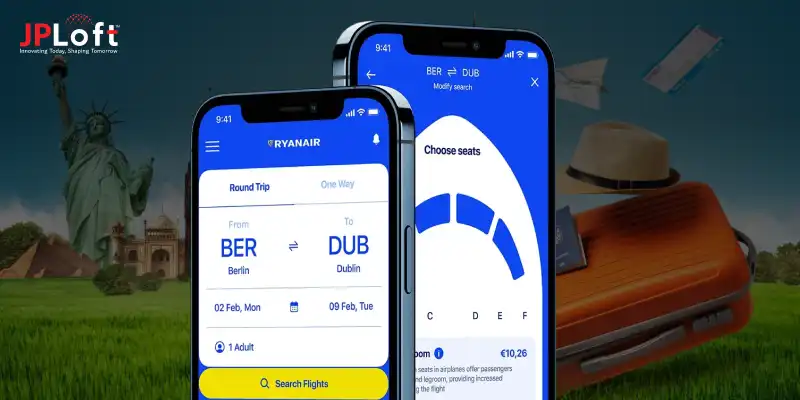
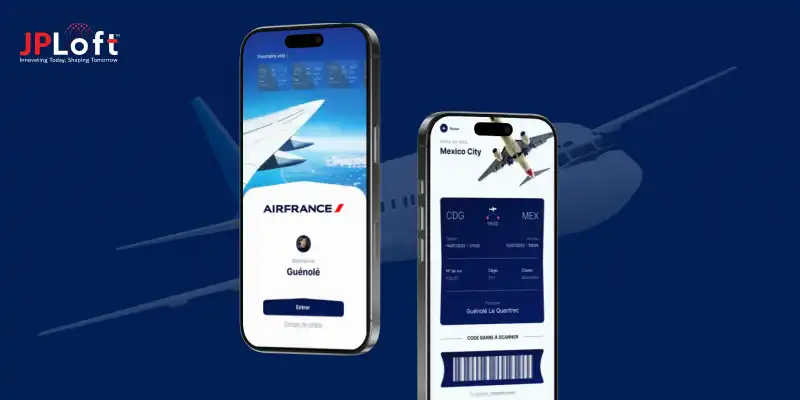
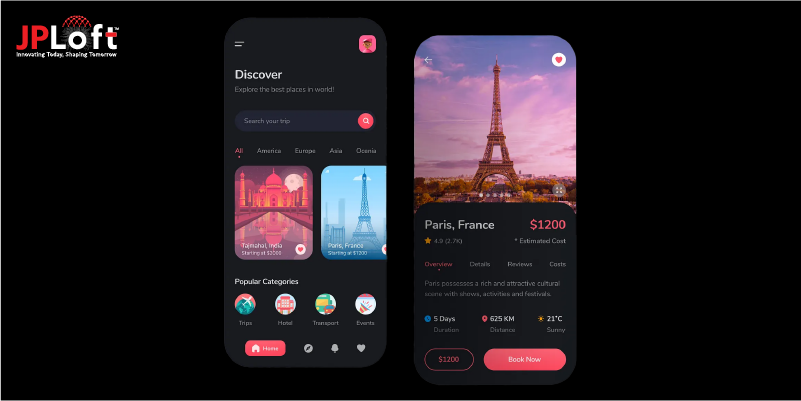


Share this blog